Input interpretation

(1, 1-dimethylbutyl)benzene
Chemical names and formulas

formula | C_12H_18 name | (1, 1-dimethylbutyl)benzene IUPAC name | 2-methylpentan-2-ylbenzene alternate names | 2-methyl-2-phenylpentane mass fractions | C (carbon) 88.8% | H (hydrogen) 11.2%
Lewis structure
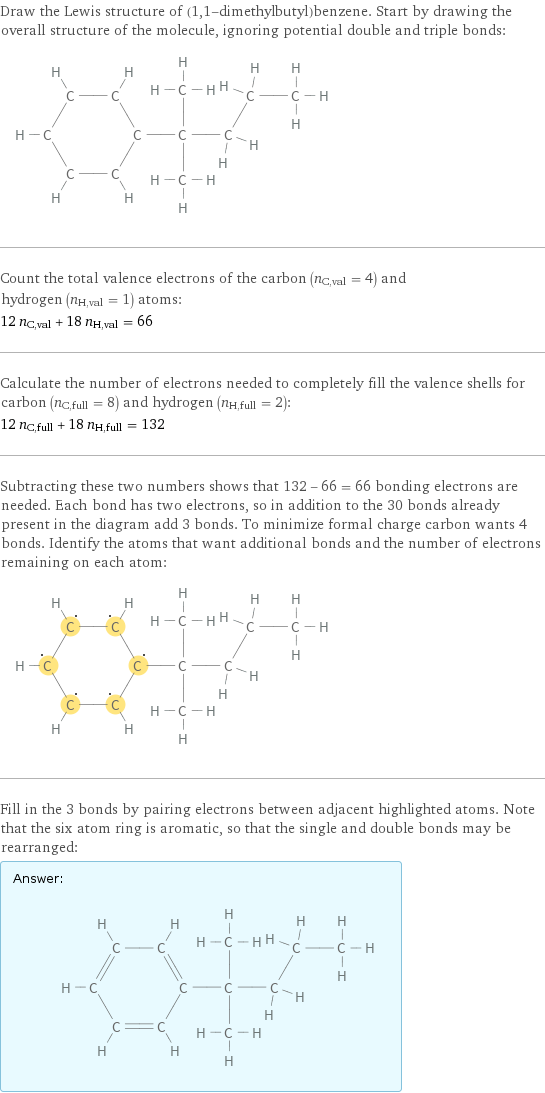
Draw the Lewis structure of (1, 1-dimethylbutyl)benzene. Start by drawing the overall structure of the molecule, ignoring potential double and triple bonds: Count the total valence electrons of the carbon (n_C, val = 4) and hydrogen (n_H, val = 1) atoms: 12 n_C, val + 18 n_H, val = 66 Calculate the number of electrons needed to completely fill the valence shells for carbon (n_C, full = 8) and hydrogen (n_H, full = 2): 12 n_C, full + 18 n_H, full = 132 Subtracting these two numbers shows that 132 - 66 = 66 bonding electrons are needed. Each bond has two electrons, so in addition to the 30 bonds already present in the diagram add 3 bonds. To minimize formal charge carbon wants 4 bonds. Identify the atoms that want additional bonds and the number of electrons remaining on each atom: Fill in the 3 bonds by pairing electrons between adjacent highlighted atoms. Note that the six atom ring is aromatic, so that the single and double bonds may be rearranged: Answer: | |
3D structure
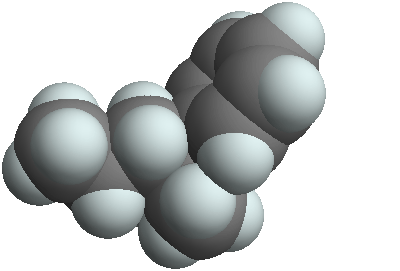
3D structure
Basic properties
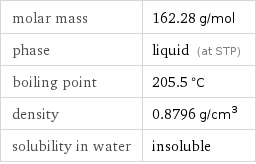
molar mass | 162.28 g/mol phase | liquid (at STP) boiling point | 205.5 °C density | 0.8796 g/cm^3 solubility in water | insoluble
Units

Liquid properties (at STP)
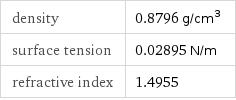
density | 0.8796 g/cm^3 surface tension | 0.02895 N/m refractive index | 1.4955
Units

Chemical identifiers
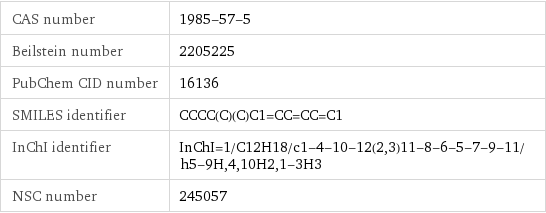
CAS number | 1985-57-5 Beilstein number | 2205225 PubChem CID number | 16136 SMILES identifier | CCCC(C)(C)C1=CC=CC=C1 InChI identifier | InChI=1/C12H18/c1-4-10-12(2, 3)11-8-6-5-7-9-11/h5-9H, 4, 10H2, 1-3H3 NSC number | 245057